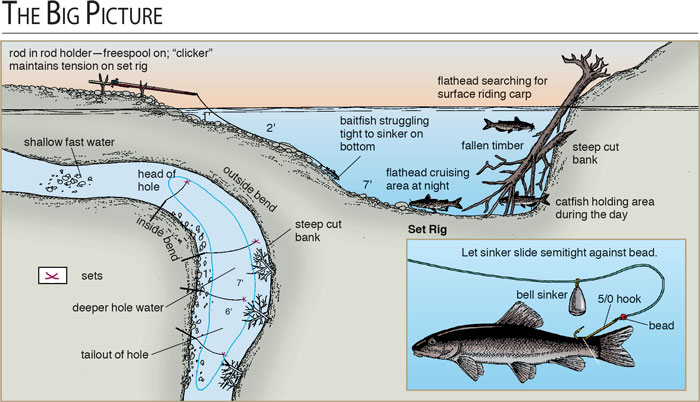Catfish fishing is a beloved pastime for many anglers across the United States, thanks to the challenge and excitement it offers. Whether you’re targeting the common channel catfish, the mighty blue catfish, or the elusive flathead catfish, understanding their behavior and habitat is key to a successful fishing trip. Here are some essential tips to help you catch more catfish and make the most of your fishing adventures.
Understanding Catfish Species
Catfish are known for their adaptability and diverse habitats. Channel catfish thrive in ponds, lakes, and rivers across the U.S. They are often stocked in small waters and are known for their willingness to feed on a variety of baits. Blue catfish, on the other hand, are found in larger rivers and reservoirs. They can grow to impressive sizes, with some exceeding 100 pounds. Flathead catfish are more predatory and nocturnal, often hiding in deeper waters with plenty of structures like fallen trees and rocks.

Best Locations for Catfish Fishing
To find catfish, focus on areas with structure and cover. In rivers and streams, look for current breaks, deeper holes, and submerged structures where catfish like to hide. Lakes and reservoirs offer excellent catfishing opportunities, especially near drop-offs, channels, and areas with submerged trees or rocks. Ponds and small lakes, often stocked with channel catfish, provide easy access and predictable feeding patterns.

Ideal Times to Fish for Catfish
While catfish can be caught year-round, certain times are more productive. Spring and early summer are ideal as catfish feed heavily in preparation for spawning. Late summer and fall also see active feeding as catfish recover from spawning. While some anglers prefer night fishing due to catfish’s nocturnal nature, catfish are active throughout the day, especially in flowing waters.
Effective Catfish Baits
Using the right bait is crucial for attracting catfish. Natural baits like live or cut shad, bluegill, worms, and shrimp are highly effective. Prepared baits, such as stink baits, dough balls, and blood baits, rely on strong scents to draw in catfish. Experimenting with different baits can help you determine what works best in your fishing spot.
Essential Gear and Setup
Having the right gear can make a significant difference in your catfishing success. Use heavy-duty rods paired with high-capacity reels to handle large catfish. Circle hooks are recommended for their higher catch rates and reduced chance of gut hooking. Braided lines offer strength and sensitivity, essential for detecting bites and handling big fish. Depending on the environment, you can use various sinker setups like Carolina rigs or slip sinker rigs to present your bait effectively.
Techniques for Catching Catfish
Catfishing techniques vary based on your fishing location. For bank fishing, set up on shore with rod holders and let your bait soak, allowing the scent to attract catfish. Boat fishing, using pontoon or flat-bottom boats, allows you to reach deeper waters and structures. Kayak fishing offers maneuverability and access to smaller waters, providing unique catfishing opportunities.


Robert Smith is the proud owner of Bait Barrels and Bows, a premier fishing sports store established in 1989. With over three decades of experience in the industry, Robert has honed his skills to become an expert angler, sharing his vast knowledge and passion for fishing with enthusiasts around the world. Through his store and writings, Robert provides invaluable tips and guidance, helping both novice and seasoned anglers improve their techniques and enjoy the sport to its fullest. His commitment to the fishing community is evident in his dedication to quality products and excellent customer service.

